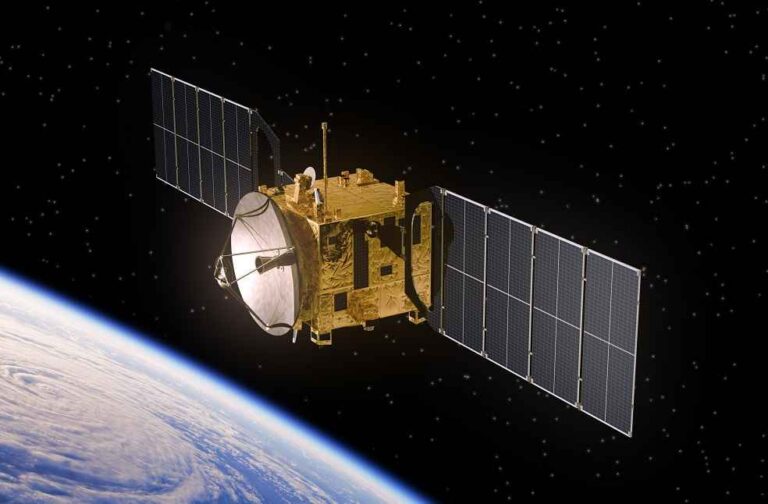Portsmouth (UK): The UK has launched its first dedicated Earth-imaging satellite, named Tyche, marking a significant step in its space defense capabilities. The satellite, approximately the size of a washing machine, is designed to provide the British military with crucial surveillance and reconnaissance data. Tyche is expected to orbit the Earth at an altitude of around 500km for at least five years.
Enhancing UK’s Space Capabilities
Tyche is a demonstration satellite that is part of a broader strategy to establish a network of military satellites equipped with various sensors. These future satellites will enhance the UK’s ability to monitor battlefield troop movements, vehicles, and other strategic targets. Some of the upcoming satellites will even have the capability to penetrate cloud cover and intercept radio transmissions.
Launch Details and Mission Objectives
Tyche was launched aboard a SpaceX Falcon rocket from California, with lift-off occurring at 11:56 local time (19:56 BST). The satellite was commissioned by UK Space Command and built by Surrey Satellite Technology Ltd (SSTL). It is equipped to capture high-resolution images, focusing on areas up to 5km wide with a resolution of 90cm.
While this resolution is not the highest available—some classified US satellites can capture details as small as 10cm—it meets the British military’s needs. Tyche’s development stems from the 2021 Space Command Paper and the 2022 Space Defence Strategy, which committed £970 million over 10 years to the Intelligence, Surveillance, Target Acquisition, and Reconnaissance (ISTARI) program. This program aims to create a sovereign constellation of military and national security satellites.
The Road Ahead
Maj Gen Paul Tedman, commander of UK Space Command, emphasized the significance of Tyche’s launch, stating, “This is the start of a journey. The space defence strategy lays out how we’re going to become a meaningful space power by 2030. Tyche is absolutely the beginning of that.” SSTL has collaborated closely with UK Space Command on ISTARI and is hopeful for future defense contracts both in the UK and internationally.
Technological Innovations
Tyche is based on SSTL’s Carbonite model, known for its rapid assembly and cost-effectiveness. The £22 million contract for Tyche includes an innovative propulsion system that uses water to maneuver the satellite. “The water goes through a thruster that heats it up to make superheated steam. That’s how we get thrust and do station-keeping,” explained Andrew Haslehurst, SSTL’s chief technology officer. Tyche carries 10 liters of water, enough to sustain its operations for five to seven years.
Strategic Importance
The UK has historically relied on allies, particularly the United States, for satellite surveillance and reconnaissance imagery. Tyche represents the UK’s first wholly owned imaging capability, signaling a shift toward greater self-reliance in space-based defense.
However, there are challenges ahead. The UK’s Defence Space Strategy has faced criticism, with concerns about the Ministry of Defence’s ability to deliver major projects on time and within budget. A recent review of UK defense needs and spending, initiated by the new government, will likely maintain the focus on space, given its growing importance in global security.
TECH WORLD | Elon Musk unveils ambitious plan to deploy humanoid robots next year



